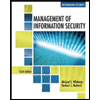For the CoinMiner malware, please write a short paragraph based on the given background and website info: CoinMiner – Trojan CoinMiner is a cryptocurrency miner family that typically uses Windows Management Instrumentation (WMI) to spread across a network. Additionally, it often uses the WMI Standard Event Consumer scripting to execute scripts for persistence. However, the malware’s capabilities may vary since there are multiple variants. CoinMiner spreads through malspam or is dropped by other malware. https://www.cisecurity.org/insights/blog/top-10-malware-december-2022 Coin Miner is a malware type that uses the hardware elements of the victim’s PC to mine cryptocurrencies. Most often, crooks who control such coin miner virus (Monero (XMR) or (Litecoin an example), as they are the easiest for mining. They can use the software that is similar or even completely repeats the one used for legit mining, but with a key difference - people whose hardware is used never agreed for this. Cryptomining malware generally aims at conducting its activity on the user’s CPU. That happens because there are pretty big number of PCs, especially in offices, where no GPU is present. Even through GPU mining is more effective by orders of magnitude, it is important for crooks to successfully launch on every PC they invade. They substitute the quality with quantity, which is pretty effective with the chosen cryptotokens. https://gridinsoft.com/coin-miner There are many different ways to force a computer or device to mine cryptocurrency. These are the three main types of miners: Executables: These are typical malicious or Potentially Unwanted Application (PUA) executable files (.exe) placed on the computer and designed to mine cryptocurrencies. Browser-based Cryptocurrency Miners: These JavaScript (or similar technology) miners perform their work in an Internet browser, consuming resources for as long as the browser remains open on the website. Some miners are used intentionally by the website owner in place of running ads (e.g. Coinhive), while others have been injected into legitimate website without the website owner's knowledge or consent. Advanced Fileless Miners: Malware has emerged that performs its mining work in a computer's memory by mis-using legitimate tools like PowerShell. One example is MSH.Bluwimps, which carries out additional malicious acts in addition to mining. https://support.norton.com/sp/en/us/home/current/solutions/v125881893 * A brief description of the malware including: - the date of the first incident’s report - How does it work, * Explain: - How one should protect his/her system against this malware - If infected, how one can cope with that? Is there any solution?
For the CoinMiner malware, please write a short paragraph based on the given background and website info:
- CoinMiner – Trojan
CoinMiner is a cryptocurrency miner family that typically uses Windows Management Instrumentation (WMI) to spread across a network. Additionally, it often uses the WMI Standard Event Consumer scripting to execute scripts for persistence. However, the malware’s capabilities may vary since there are multiple variants. CoinMiner spreads through malspam or is dropped by other malware.
https://www.cisecurity.org/insights/blog/top-10-malware-december-2022
Coin Miner is a malware type that uses the hardware elements of the victim’s PC to mine cryptocurrencies. Most often, crooks who control such coin miner virus (Monero (XMR) or (Litecoin an example), as they are the easiest for mining. They can use the software that is similar or even completely repeats the one used for legit mining, but with a key difference - people whose hardware is used never agreed for this.
Cryptomining malware generally aims at conducting its activity on the user’s CPU. That happens because there are pretty big number of PCs, especially in offices, where no GPU is present. Even through GPU mining is more effective by orders of magnitude, it is important for crooks to successfully launch on every PC they invade. They substitute the quality with quantity, which is pretty effective with the chosen cryptotokens.
https://gridinsoft.com/coin-miner
There are many different ways to force a computer or device to mine cryptocurrency. These are the three main types of miners:
- Executables: These are typical malicious or Potentially Unwanted Application (PUA) executable files (.exe) placed on the computer and designed to mine cryptocurrencies.
- Browser-based Cryptocurrency Miners: These JavaScript (or similar technology) miners perform their work in an Internet browser, consuming resources for as long as the browser remains open on the website. Some miners are used intentionally by the website owner in place of running ads (e.g. Coinhive), while others have been injected into legitimate website without the website owner's knowledge or consent.
- Advanced Fileless Miners: Malware has emerged that performs its mining work in a computer's memory by mis-using legitimate tools like PowerShell. One example is MSH.Bluwimps, which carries out additional malicious acts in addition to mining.
https://support.norton.com/sp/en/us/home/current/solutions/v125881893
* A brief description of the malware including:
- the date of the first incident’s report
- How does it work,
* Explain:
- How one should protect his/her system against this malware
- If infected, how one can cope with that? Is there any solution?
Step by step
Solved in 5 steps




